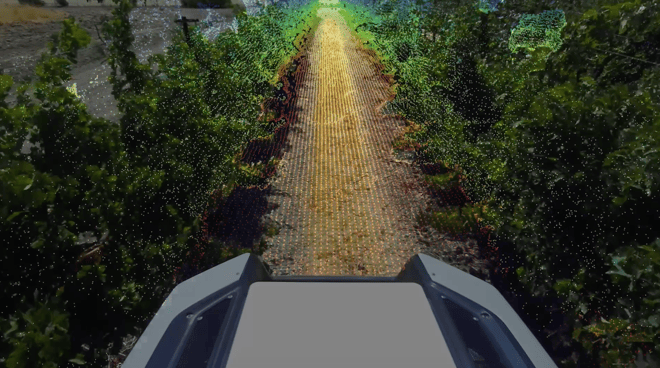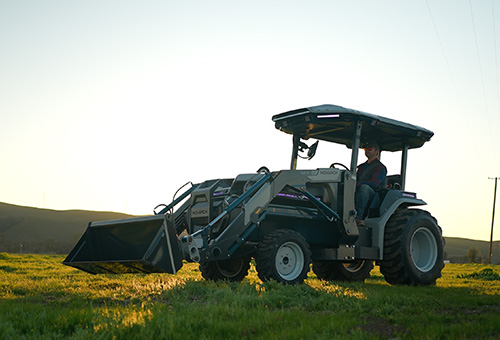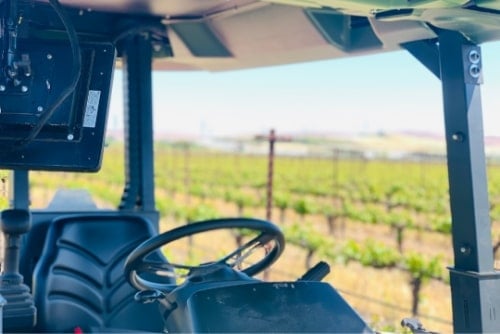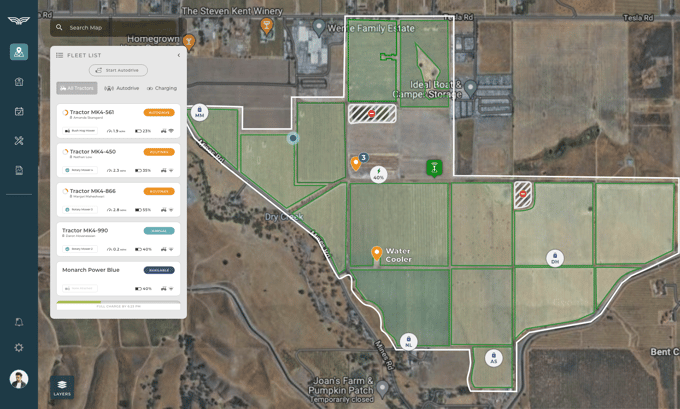Summary:
-
Robotics in agriculture automate key tasks—like feeding, mowing, and harvesting—boosting efficiency, crop health, and profitability.
-
Advanced farm robots use AI, sensors, and electrification for precise operations and 24/7 productivity.
-
Automation helps farmers tackle labor shortages, reduce costs, and improve working conditions.
-
Electric, autonomous tractors and modular platforms speed AgTech innovation and reduce dependence on diesel and chemicals.
-
Smart, robotic systems support more sustainable farming, protecting natural resources and enabling profitable operations.
Robots are inextricably linked to our daily existence. You’ve likely had one or two in your house for decades without even realizing it, automating the process of washing clothes or cleaning dishes. Robots are also hidden behind the scenes, manufacturing many of the objects we purchase, performing the medical care we receive, facilitating the energy we use, and helping grow the food we eat.
Robotics in agriculture and robotic farming are playing a transformative role in advancing a shift towards more efficient, precise, and sustainable agriculture practices. It’s a scenario of better success in crop health, production, and profitability, outcomes that benefit us all.
What is Robotic Farming and How Are Farmers Using It?
Robots are machines engineered to automate physical tasks. Robotic farming is using these machines for farm-related operations. The types of farms that use robotic ag technologies and how the technology can be used includes:
-
Dairy. Autonomous feed pushing robots “blade” the food up to the cows so they can reach it.
-
Solar farm. An autonomous tractor mows vegetation between the photovoltaic arrays.
-
Orchards and specialty crops. Harvesters automatically select ripe fruit.
-
Livestock. Drones search for lost cows or sheep.
-
Broad acre. Balers compress and bind previously cut crops like hay or flax.
If performed by hand, these jobs, along with many other types of farmwork, would take hours of intensive labor. Two centuries ago, that was the only option, but the world has since changed. Up against the relentless demands of a growing global population in tandem with ongoing challenges in labor, input cost pressures, unpredictable weather, safety issues, and protecting the viability of natural resources, farmers must become more efficient at everything they do. Robotics in agriculture is helping them do it.
By automating repetitive and labor-intensive processes, robotic farming helps alleviate the pressures of labor challenges and rising production costs. Farming robots also enhance crop yields and enable sustainable agriculture practices through zero-emission machinery, targeted resource use, and minimizing waste. As the global demand for food rises and sustainable agriculture practices become increasingly vital, integrating robotic ag technologies helps farmers optimize operations, improve working conditions, and ensure a resilient future for producers and consumers.
Robotics in agriculture leverages advanced technologies such as sensors, artificial intelligence (AI), and data analytics to operate autonomously, allowing for round-the-clock productivity and enhanced precision in activities like planting, milking, and vegetation management.
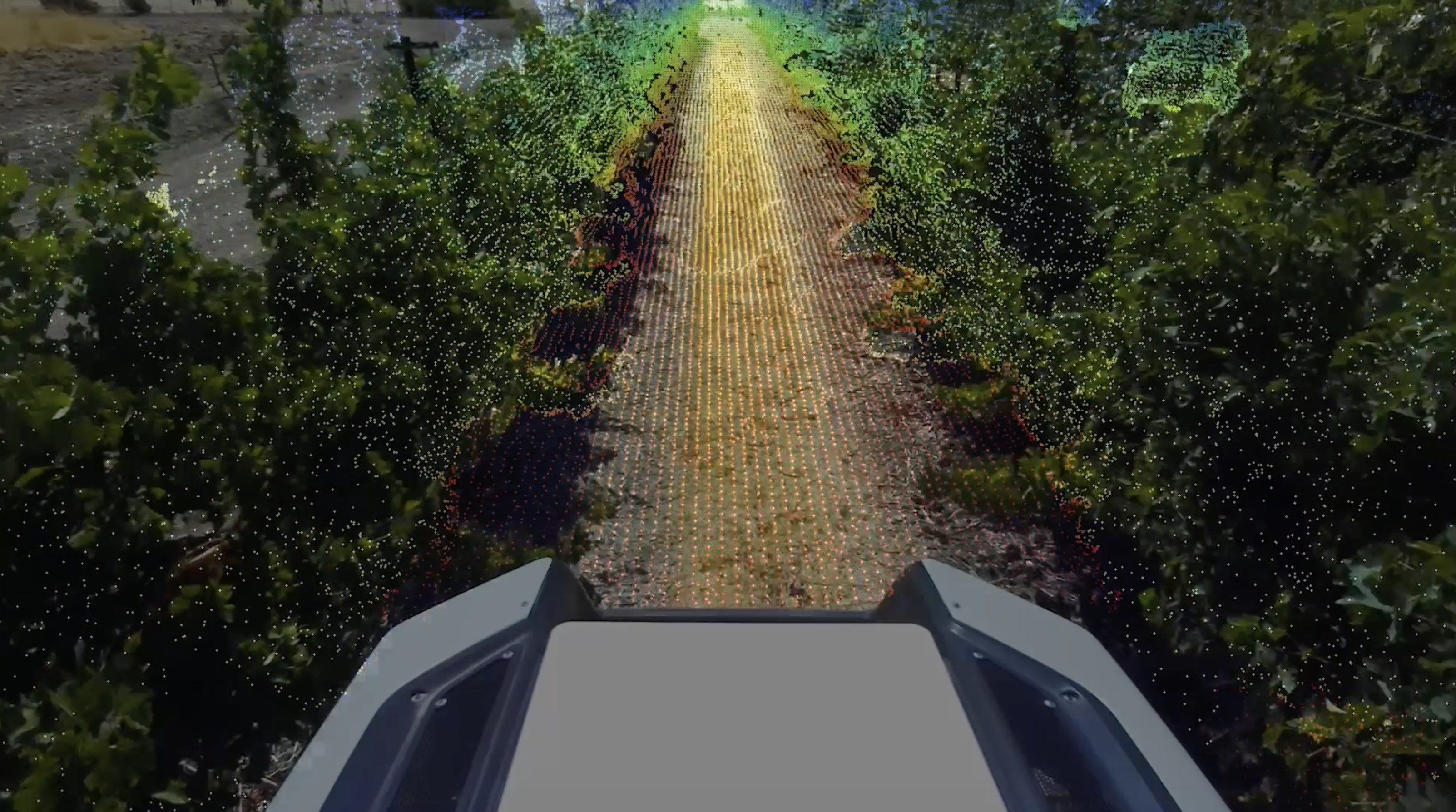
Agriculture Technology Evolution: Quick Trip
Understanding a basic historical background of ag technologies in farming provides perspective and a better understanding of what robotics in agriculture means for farmers and the agriculture equipment industry.
From Hands to Horsepower
Archeological evidence of farming dates to roughly 11,500 years ago. Simple hand tools were eventually joined with animal-powered implements. It wasn’t until the late 1800s and early 1900s that mechanical equipment began to pick up the pace, one of the most significant and impactful being the tractor. When affordable mass-produced tractors powered by the internal combustion engine became widely available, farmers were able to cultivate larger acreages of crops, achieving greater productivity with less labor. Horsepower shifted from animals to machines.
Big Tractors & Big Ag
Tractor technology continued to advance. The Green Revolution in the mid-20th century marks a significant shift in how food was grown and the way farmers cared for the land. With the introduction of high-yield crop varieties, chemical fertilizers, herbicides, and pesticides all managed with increasingly larger machinery, farmers dramatically increased yields.
The high-yield productivity spike came with a severe, long-term cost. Large tractors required significant capital investment leveraged against a farmer’s future profits. Farmers began relying on a steady stream of agri-petroleum chemicals, which when used in excess, depleted soil nutrients and organic matter, making soil vulnerable to erosion and unable to support healthy crops without heavy use of fertilizers. Reliance on diesel to power large tractors also contributed to a farm’s ballooning list of expenditures. Ag’s collective use of diesel came with diesel emissions, which contributed to ground-level ozone pollution and the formation of acid rain, which negatively affects crop growth, water and air quality. These issues continue to be a growing concern today.
High-Tech Takes Hold
Many of today’s AgTech innovations, like robotics in agriculture, are working to help address these escalating challenges so farmers can reduce their dependence on external inputs, improve the health of their farmlands, and develop a system of profitable, sustained operations that produce high-quality products and nutrient-dense foods.
Digital Farming & Physical AI
Digital technologies are transforming agriculture into a highly efficient, data-driven industry. These include:
-
GPS-guided systems
-
Imaging
-
Connectivity
-
Smart sensors
-
Data analytics
Today, many of these digital technologies are integrated into robotic machinery.
At the same time, Physical AI is advancing the efficacy and use cases of autonomous tractors, analytics, and reporting. Whereas AI is not inherently robotic, it is an engineered, intelligent computer system that enables sophisticated machinery to operate autonomously. AI ag technologies also exist independently as software.
Manufacturing & Development
Advancements in sophisticated robotic farming machinery and the technology that enhances functionality are also changing the landscape of the AgTech in manufacturing. Monarch provides an interesting case study. Over the span of five years, Monarch has emerged as a global leader in intelligent off-highway systems. Monarch is the creator of both the MK-V, the world’s first 100% electric, driver-optional, and smart tractor, and MonarchOne™, a modular, software-defined vehicle and Physical AI platform built for off-highway original equipment manufacturers (OEMs).
For an OEM, bringing an innovation from concept to commercialization represents a significant investment in time and money. It can take years. With the launch of MonarchOne in 2025, manufacturers have access to a partner with a scalable platform for automation, digitization, and decarbonization, which helps them get new ideas to market, faster, while reducing complexity and investment costs. It’s a framework that advances innovation, real-world problem-solving, and accessibility, ultimately benefiting an OEMs customers and end consumers.
In fact, MonarchOne is the platform that powers Monarch’s MK-V. Monarch Tractor stands out as the first AgTech company to release a true autonomous functionality in an electric tractor to the market; autonomous feed pushing for outdoor and covered dairies.
.png?width=3840&height=2160&name=MT_Feb24_DairyBlade-120%20(1).png)
What are Some Examples of Robotic and Autonomous-Powered Machines in Agriculture?
Tractors represent one approach to robotic farming, but agriculture employs a variety of robots to handle a wide array of tasks:
-
Harvesting robots equipped with sensors and AI automate the picking of fruits and vegetables with gentle and precise handling
-
Vegetation management robots use AI and vision systems to distinguish crops from weeds to target the latter. Digital capabilities increase value. To wit, Monarch’s zero-emission MK-V is compatible with many implements to manage weeds with precision while collecting valuable operational data.
-
Dairy feed-pushing robots move up and down a dairy lane “blading” the food so a cow can reach it. For dairies, the more a cow eats, the more milk she produces. Feed-pushing robots exist as a tractor, like Monarch’s driver-optional MK-V Dairy tractor or as single-use machinery that operates along a pre-set, physical track.
-
Planting and seeding robots automate sowing with high precision, adjusting seed placement based on real-time data.
-
Drones (unmanned aerial vehicles or UAVs) monitor crop health, map fields, and assess irrigation needs using multispectral and thermal sensors.
-
Livestock monitoring robots harness the use of sensors and GPS to track animal health and activity.
-
Automated milking carousels use a combination of AI and sensors to milk cows and collect metrics around time and output. Automated milking stalls enable cows to self-service their milking sessions.
-
Robotics paired with smart, digital implements allow a vineyard to gather plant-level data while conducting routine operations. AI detects disease and provides detailed insights on health and productivity forecasts.
The Solar Farm
Robotic farming goes far beyond the food network. A solar farm is also a form of farming, harvesting the sun’s rays and converting it into usable energy to power homes and businesses, electric vehicles, and electric farm machinery. Solar farms play a critical role in energy security, diversifying a country’s energy portfolio and alleviating strain on the grid.
In a solar farm, plants grow in the rows between the photovoltaic arrays, making vegetation management an important part of operations. It’s a perfect use case for robotics. Monarch’s MK-V is filling this need with an automated vegetation management solution that moves up and down the rows, mowing autonomously.
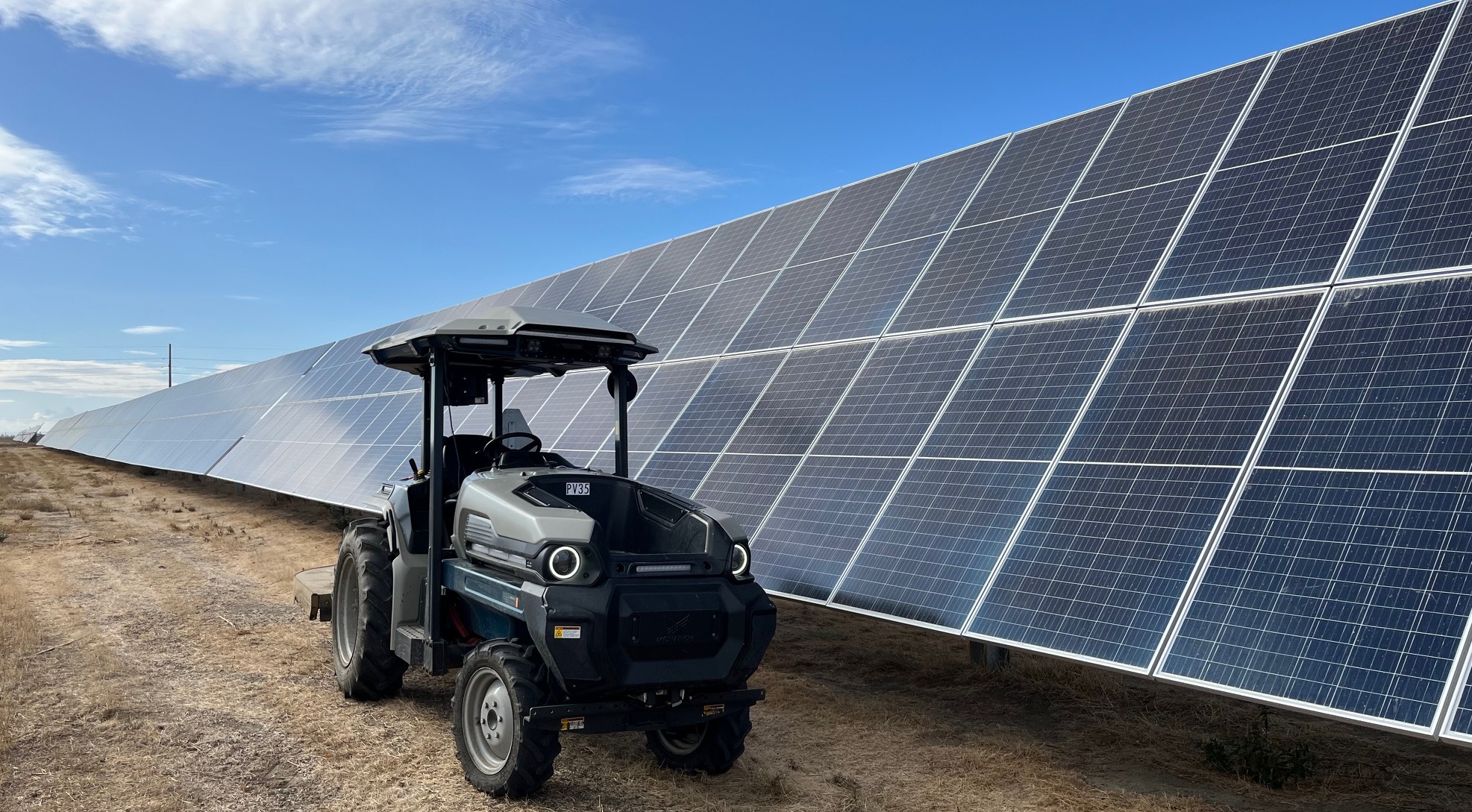
Are There Benefits With Robotics in Agriculture?
Robotics, particularly those enhanced with smart farming technology and electrification are delivering key benefits to modern agriculture:
-
Increased productivity. Farming robots can operate continuously, performing repetitive and labor-intensive tasks efficiently.
-
Safer work environment. Robotics in agriculture can take on the dull and dangerous jobs. Automating vegetation management eliminates operator exposure to toxic diesel emissions and exposure to herbicides and pesticides.
-
Enhanced precision: Automated systems enable targeted application of water, fertilizers, and pesticides, reducing waste and optimizing yields. Even semi-autonomous features like autosteer or Row Follow (automated lane centering for narrow rows), helps reduce operator fatigue and improve precision.
-
Sustainability: Deploying robotic ag technologies minimizes or eliminates chemical usage, reduces soil compaction, and supports environmentally-friendly practices that protect a farm and community’s natural resources, all of which contribute to long-term farm viability. When robotic farm machinery is electric, diesel emissions are fully eliminated for cleaner air quality.
-
Labor shortage solutions: Automation addresses the ongoing shortage of agricultural labor, helps workers focus on higher-priority tasks, and lowers operational costs.
-
Improved crop quality: Robots provide consistent handling and monitoring, leading to higher-quality produce and reduced crop loss.
-
Specialized configurations. Software-enabled, off-highway machinery, like those integrated with MonarchOne, can be configured to support different use cases.
How to Successfully Deploy Farming Robots
Robotics in agriculture occupies the point position in a dynamic sector that is rapidly advancing. For struggling farmers, the need to optimize productivity while protecting their natural resources is urgent and undeniable. Boosting productivity, sustainable agriculture practices, and efficiency is a trifecta that paves the way for long-term success and protection of their livelihood. While many vendors are claiming these benefits, those specializing in automation, Physical-AI, and smart field equipment are providing compelling real-life case studies.
How does a farmer identify which of the new and promising ag technologies in robotics will deliver the biggest ROI and shortest payback time? There are several ways to assess potential success:
-
Identify total cost. Infrastructure, training, and on-going maintenance should always be factored into the price tag. This goes for conventional and new equipment. A diesel tractor, for instance, requires on-going diesel delivery on top of the purchase price, along with storage, compliance costs, and regular maintenance over the tractor’s lifetime. An electric, driver-optional, and smart tractor requires a charging station, high-speed internet connectivity, and a likely subscription fee. When comparing diesel vs. electric, the cost analysis of charging and running an electric tractor brings greater payback, especially against a diesel’s health risks and dependence on unreliable fuel prices. Autonomy brings labor savings, precision, and production increases.
-
Opportunity Cost. Often overlooked in cost calculations is that of lost opportunity. Technology like robotics in agriculture is giving early adopters an operational and efficiency advantage. The farms willing to work with manufacturers and AgTech companies are more likely to be the major players in long-term profitability and farm security.
-
Calculate lifetime value. As robotic machinery advances, farmers and land managers need solutions whose technology will last and not become obsolete. Software-defined machinery, like Monarch’s MK-V tractor, is enhanced with improvements and new features with over-the-air updates, long past the purchase date.
-
Be operationally prepared. Understand how a piece of robotic farming machinery will fit into a farm’s operational system. A dairy farm has two options in electric, autonomous robotic feed pushers. Both help with labor challenges and boost feed intake. But one version requires a track and is engineered to for a single task. The other, the MK-V Dairy, is built as a compact tractor and can push feed, provide historic and live video footage and usage metrics for operational accountability. And because it’s fundamentally a tractor, it can be put to work on other tasks around the dairy farm when needed.
-
Adopt an Implementation Framework. Realizing the full value of a robotic machinery investment requires a farm to be ready and willing to integrate it into operations. Training sessions and communication with the vendor and with farmhands can boost adoption and the benefits associated with the technology.
Best of Both
Farmers should not be forced to choose between safeguarding their livelihood for a handful of additional growing seasons against potentially losing the viability of their farmland down the road. This is the position the conventional ag industry has created for them.
Farming robotics with automation and Physical AI are enabling farmers to return to practices that nourish the land and protect natural resources, all while improving profitability and efficiency. Companies like Monarch recognize that healthy development comes from prioritizing farmers’ real-life needs, respecting their challenges, and working with them as partners, not just customers. The merging of sophisticated AgTech and ag robotics with old-fashioned commitment, innovation, and service is yielding wins for farmers, consumers, and the planet.
